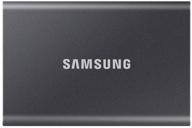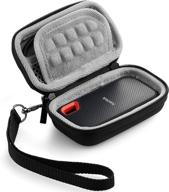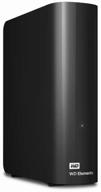
Review on 🔒 Sabrent M.2 PCIe NVMe and SATA SSDs (EC-SNVE) USB 3.2 Type-C Tool-Free Enclosure by Chris Fields

Realtek RTL9210B based case with great build quality
There are two important things to consider when looking for an SSD case: chipset and cooling. I'll leave the discussion of cooling to other reviewers who may spend a lot more time testing and talking about the chipset and overall build quality. TLDR: This body is the trustee. There are three major chipsets on the market today: JMicron JM583, ASMedia ASM2362 and Realtek RTL9210. This case, at least the version I received, includes the Realtek chipset. Specifically, it includes a soft version called the RTL9210B, which to my knowledge is the only chipset that supports NVMe and SATA drives. This is fantastic news. The Realtek chipset still has the best reputation on the market for stable performance with low heat loss. The most widely used chipset on the market, JMicron, has shown many stability issues, likely caused by excessive power draw from the USB port, causing internal storage to overheat and triggering self-save throttling and even shutdown. Pluggable, a premium maker of another NVMe-to-USB product, has replaced its JMicron-based chassis with a Realtek-based chassis after reviewing initial customer feedback. It appears that Sabrent has followed in Pluggable's footsteps by replacing its old JMicron-based device with what we have today, based on a new Realtek chip. The case itself is a "sandwich" type with a permanent mount on one end that opens via hinges. and closed. The entire outer case is made of very rigid aluminium, so I had a hard time removing the internal circuit board to take the photos posted in the review. This should act as a very efficient heatsink when the drive is under heavy use. The tool-less mechanism is a rubber stopper. All tolerances are very tight, thanks to which the portable drive does not creak or rattle when closed. The biggest advantage of a sandwich mechanism over a "slide" mechanism is that it's very easy to apply thermal pads to hot components and keep them in contact with the outer shell, which acts as a common heatsink. The sliding mechanism cannot have full contact because then there is no sliding clearance. Overall I highly recommend this product. The combination of an attractive price, excellent build quality and a top-level chipset is unmatched by any other case I know of.
- Nice packaging
- So-so
New products
Comments (0)
Top products in 💽 Hard Drive Accessories

1 TB External SSD Samsung T7, USB 3.2 Gen 2 Type-C, grey

15 Review

🧳 Protective Carrying Case for SanDisk Extreme Portable SSD (250GB/500GB/1TB/2TB/4TB) - Not Compatible with Pro Version

11 Review

Game console Sony PlayStation 4 Slim 1000 GB HDD, black

180 Review

10 TB External HDD Western Digital WD Elements Desktop, USB 3.0, black

17 Review
Another interesting products

Enhance Your Visual Experience with Logitech C260 Webcam

78 Review

🎥 Logitech C270 Webcam: Crystal Clear Video and Superior Quality

183 Review

Smartphone Samsung Galaxy A50 4/64 GB, 2 SIM, black

82 Review

💻 Get Amazing Video Quality with Logitech HD Pro Webcam C920 (Discontinued Edition)

83 Review

